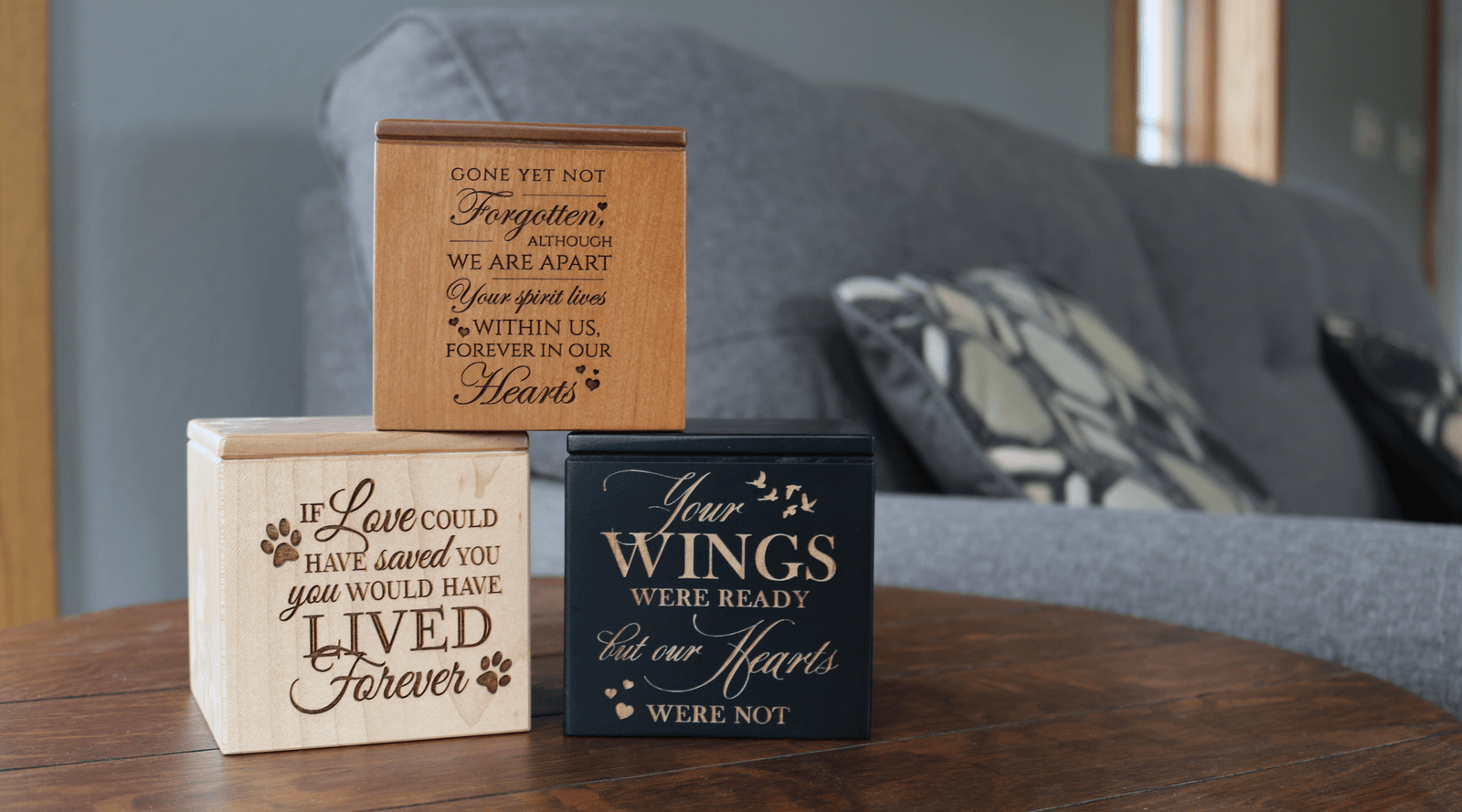FREE Shipping on Orders Over $100*
Menu
-
-
Occasions
-
Recipients
-
Products
-
Baptism
- Anniversary
-
Pets & Pet Lovers
-
Sympathy & Memorial
- On Sale
- Blogs
-
- 419-445-4200
- Login

FREE Shipping on Orders Over $100*
occasions
anniversary
What Is Cremation?: Understanding the Journey of Transformation
by LifeSong Milestones February 20, 2024 4 min read

The cremation process is an age-old practice that has become increasingly popular as an alternative to traditional burial. It offers a range of benefits, including affordability, flexibility, and environmental considerations. In this comprehensive guide, we will delve into the intricacies of the cremation process, shedding light on each stage and providing a detailed understanding of how the process works.
1. Cremation: An Overview
Cremation is the process by which a deceased body is reduced to its essential elements through the application of intense heat and evaporation. This process takes place in a specially designed large cremation chamber, a.k.a. a retort, (basically an industrial furnace with a fire-resistant brick lining). These chambers are constructed to withstand extreme temperatures and are equipped with advanced control systems to ensure an efficient and respectful cremation process.
2. Preparing For Cremation
Before the cremation process can commence, several important preparations must be made. These include obtaining legal authorization, completing necessary documentation, and ensuring the accurate identification of the deceased. Crematoriums may only begin once a death certificate is received. There may be delays in getting doctor issuance since often doctors are given up to 3 days to sign and return a death certificate. Adhering to legal requirements and respecting the expressed wishes of the deceased are crucial aspects of this stage.
3. Transfer And Identification
Once the necessary preparations are complete, the body is transferred to the crematorium. Before cremation can occur, a meticulous identification process takes place to ensure the correct body is being cremated. Unique identification tags are used, and strict protocols are followed to maintain accuracy and uphold the utmost respect for the deceased and their loved ones.
4. The Cremation Chamber And Temperature
The cremation chamber, also known as a retort, is a specialized furnace designed specifically for the cremation process. The body, enclosed in a combustible container or casket, is placed inside the chamber. The temperature within the chamber is then raised to a range of 1,400 to 1,800 degrees Fahrenheit (760 to 982 degrees Celsius). This intense heat and the accompanying flames reduce the body to its fundamental elements, primarily bone fragments.
5. Add Mementos To The Chamber And What You See
Often the crematorium operator or funeral director will allow you to place certain mementos, like flowers or photos, into the chamber with the deceased. Some funeral homes also have a viewing room where the loved ones can watch the cremation process. When the body is prepared and placed in the retort, sometimes family members are allowed to press the button to send the body into the chamber. When viewing a cremation, that is all you see. No flames are seen. The family may stay throughout the entire cremation process to mourn.
6. The Cremation Process And Duration
Once inside the cremation chamber, a sequence of steps commences. The container holding the body is subjected to direct flame, causing it to combust. Over time, the flames consume the container and the body within. The cremation can take anywhere from 1-5 hours. The duration varies depending on factors such as body weight, bone density, and the efficiency of the cremation equipment. Note that depending on the company, you may be able to collect ashes on the same day or within a couple of days.
7. After the Cremation And Look Of Ashes
Following the completion of the cremation process, the remaining bone fragments, often referred to as “cremated remains” or "ashes," are allowed to cool. Once cooled, these fragments (usually larger bones like hips or shins) are carefully gathered to undergo a grinding procedure in a cremulator to ensure they are reduced to a fine, sand-like consistency. If there were any gold/metal teeth or metal pins, they end up being melted down. Any metal objects, such as surgical implants or jewelry, are removed from the remains. The remains look like ashes ranging in color from white to dark gray, with a gritty and coarse texture.
8. How Much Ashes Can You Expect to Receive
The ashes you receive are the entirety of your loved one’s cremations. Depending on the weight and size of your loved one, you may receive ashes weighing between 3 and 9 pounds. Usually, you will receive one cubic inch of ash for every pound your loved one weighed at the time of death. If someone weighed 200 lbs., then you would want to choose an urn that holds 200 cubic inches of ash (like the urn pictured below). If someone was big-boned, then you may receive slightly more ashes. It’s important to choose an urn that is large enough to fit all the ashes, so when in doubt, choose a larger size. A conversion calculator found here can be used. For more information, read, “How to Determine the Right Size Urn for Your Ashes.”
9. Placement Of Cremated Remains
The cremated remains are then placed in a temporary container, plastic bag, or an urn, depending on the family's preferences. Check out a wide variety of personalized wooden cremation urns here. Families have the freedom to decide whether to keep the cremated remains at home, scatter them in a meaningful location, bury them in a cemetery or columbarium, or choose another memorialization option. To find an urn that will suit your purpose, read, “How to Find a Cremation Urn that Fits Your Needs.”
10. Post-Cremation Procedures And Considerations
Once the cremation process is complete, the crematorium ensures proper identification and handles any necessary paperwork. Families are typically provided with a certificate of cremation or cremation permit, which serves as legal documentation of the process. Furthermore, some individuals choose to hold a memorial service or celebration of life to honor and remember their loved ones.
11. Environmental Considerations
Cremation is often considered a more environmentally friendly option compared to traditional burial. It eliminates the need for embalming fluids and reduces land usage for burial plots. However, it is important to note that the cremation process does release carbon emissions and other gasses into the atmosphere. To address these environmental concerns, many crematoriums are adopting cleaner technologies and offering greener alternatives to minimize their impact.
Conclusion
The cremation process is a dignified and transformative journey that allows for the respectful handling of human remains. Understanding the various stages involved in this process can help individuals make informed decisions when considering cremation as an end-of-life option. As cremation continues to gain popularity, advancements in technology and environmental practices contribute to making it a more sustainable and compassionate choice for families.
Leave a comment
Comments will be approved before showing up.
Also in Blogs

Best Memorial Day Gift Ideas To Celebrate Our Heroes
by LifeSong Milestones April 27, 2024 5 min read

12 Ways Teachers Can Help Students Cope With Grief and Loss
by LifeSong Milestones April 25, 2024 5 min read


